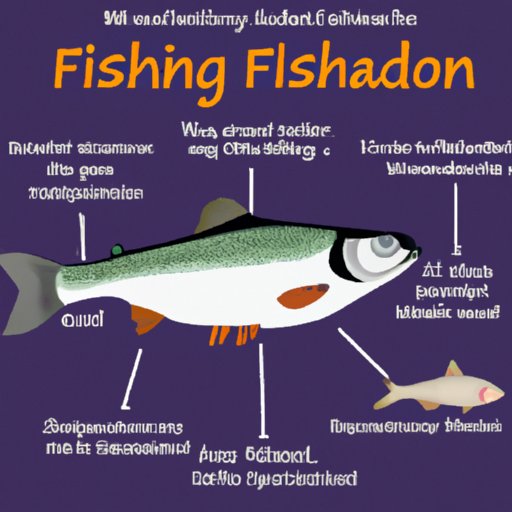Introduction
Fish is a staple in many diets around the world, and it’s considered one of the healthiest foods available. It’s a great source of lean protein, vitamins, minerals, and other essential nutrients. But there are also potential risks associated with eating fish, including contamination with toxins and mercury. In this article, we’ll take an in-depth look at the nutritional and health benefits of eating fish, as well as the potential risks.
Analyzing the Nutritional Benefits of Fish
Fish is an excellent source of lean protein, which is important for maintaining muscle mass, building strong bones, and regulating hormones. It’s also packed with vitamins and minerals, including vitamin D, calcium, magnesium, iron, and zinc. Depending on the type of fish, it may also contain omega-3 fatty acids, which have been linked to numerous health benefits. Additionally, fish is low in calories, making it an ideal choice for those looking to maintain or lose weight.

Examining the Health Risks of Eating Fish
While fish can be a nutritious and healthy part of your diet, there are some potential risks associated with eating it. For example, some fish may contain high levels of toxins, such as polychlorinated biphenyls (PCBs) and dioxins. These toxins can accumulate in the body over time and may cause serious health effects. Additionally, some fish may contain high levels of mercury, which can damage the nervous system and cause developmental delays in children.
Furthermore, there is a risk of foodborne illness from eating raw or undercooked fish. To reduce this risk, always make sure that the fish you’re consuming has been cooked properly and is safe to eat.

Exploring Popular Types of Fish and their Health Benefits
There are many different types of fish available, each with its own unique health benefits. Here are some of the most popular types of fish and their associated health benefits:
- Salmon: Salmon is a great source of omega-3 fatty acids, which can help reduce inflammation and improve heart health. It’s also high in protein and low in calories.
- Tuna: Tuna is another great source of omega-3 fatty acids. It’s also an excellent source of selenium, which helps support the immune system and thyroid health.
- Mackerel: Mackerel is an excellent source of vitamin B12, which helps support energy production and the nervous system. It’s also high in omega-3 fatty acids.
- Tilapia: Tilapia is low in fat and calories, making it a great choice for those looking to maintain or lose weight. It’s also a good source of protein and vitamins.

Determining the Best Ways to Prepare Fish for Maximum Nutrition
When preparing fish, it’s important to choose methods that will maximize the nutritional value. The best ways to prepare fish are baking, grilling, poaching, and steaming. These methods are low in fat and help retain the most nutrients in the fish. It’s also important to avoid adding too much salt, as this can increase your risk of hypertension.
Understanding the Role of Omega-3 Fatty Acids in Fish
Omega-3 fatty acids are a type of polyunsaturated fat found naturally in certain types of fish, such as salmon, mackerel, and tuna. They have numerous health benefits, including reducing inflammation, improving heart health, and supporting brain development. Omega-3 fatty acids can also be found in plant-based sources, such as flaxseed, walnuts, and chia seeds.
Comparing the Health Benefits of Fresh Versus Frozen Fish
When selecting fish, it’s important to consider whether fresh or frozen is the better option. Fresh fish is generally higher in nutrients than frozen, as freezing can cause some of the nutrients to degrade over time. However, frozen fish is often more affordable and can be easier to find. When selecting either option, it’s important to look for fish that is free of toxins, mercury, and other contaminants.
Conclusion
Fish is a nutritious and healthy part of any diet. It’s a great source of lean protein, vitamins, minerals, and omega-3 fatty acids. However, there are potential risks associated with eating fish, such as contamination with toxins and mercury. To maximize the nutritional benefits of eating fish, it’s important to select the freshest, safest fish and prepare it using methods that retain the most nutrients. With these tips in mind, you can enjoy the many health benefits of eating fish.
(Note: Is this article not meeting your expectations? Do you have knowledge or insights to share? Unlock new opportunities and expand your reach by joining our authors team. Click Registration to join us and share your expertise with our readers.)
